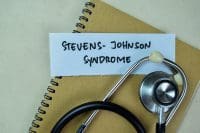Grace Johnson, age 77, is admitted from the emergency department (ED) to your unit with dehydration and electrolyte imbalance caused by acute nausea and vomiting. Her vital signs are: blood pressure (BP), 105/67 mm Hg; pulse, 98 beats/minute and regular; respiratory rate, 20 breaths/minute; and oxygen saturation (O2Sat), 94% on 2 L/minute of oxygen. She has a history of atrial fibrillation (AF) and coronary artery disease (CAD), so you place her on telemetry. As ordered, you start an I.V. infusion of 5% dextrose with half-normal saline solution and 20 mEq of potassium chloride at a rate of 125 mL/hour.
Two hours later, the certified nursing assistant (CNA) measures Mrs. Johnson’s BP at 148/88 mm Hg, heart rate at 138 beats/minute, respiratory rate at 28 breaths/minute, and O2Sat at 88%. When the patient asks if she can sit up higher in bed to help her breathe, the CNA raises the head of the bed to 90 degrees—then leaves the room to find you.
Assessment hints
When you get to her room, Mrs. Johnson tells you, “My heart is racing and I’m having a hard time catching my breath.” On examination, you detect bilateral breath sounds with crackles and an irregular heart rhythm. The telemetry monitor verifies AF.
Call for help
Suspecting Mrs. Johnson has fluid overload and possible pulmonary edema, you increase her oxygen flow to 4 L/minute to maintain O2Sat above 90%. You stop the I.V. fluid infusion and ask the charge nurse to watch over her while you call the physician.
On the scene
When the physician calls back, you convey all pertinent information. He orders furosemide 40 mg I.V., an indwelling urinary catheter, a STAT portable chest X-ray, and I.V. fluid discontinuation. The charge nurse inserts the urinary catheter while you give the furosemide. A radiology technician obtains the chest X-ray.
Within a few minutes, Mrs. Johnson’s respiratory rate has increased to 36 breaths/minute. She is diaphoretic and anxious; her O2Sat is 92% on oxygen at 8 L/minute via simple mask. Knowing morphine would ease her breathing and anxiety, you obtain an order and give 2 mg I.V.
Outcome
Mrs. Johnson’s X-ray shows acute pulmonary edema and mild heart failure. Within 30 minutes of treatment, her urine output increases significantly and she is more relaxed as her respiratory status improves. Still in AF, her O2Sat is now 94% on 4 L/minute of oxygen by cannula.
After 2 hours, Mrs. Johnson’s vital signs have returned to their admission baseline values. She has converted back to sinus rhythm and has produced 1,500 mL of light yellow urine.
Education and follow-up
Mrs. Johnson received 2 L of fluid in the ED and continued to get fluids on your unit. Her heart failure and pulmonary edema probably stemmed from a combination of fluid overload, CAD, and AF. Patients typically require oxygen, diuretics, and sometimes morphine to relieve anxiety and reduce the heart’s oxygen demand.
Teach Mrs. Johnson to watch for clues to fluid overload and AF, including difficulty breathing, a “racing” heart, and anxiety. Also teach her how to recognize signs and symptoms of heart failure, including shortness of breath, edema in the legs, weakness, and weight gain. Instruct her to weigh herself daily at about the same time on the same scale, and to call her physician if she gains 3 or 4 lb over 2 or 3 days.
Pulmonary edema can be managed effectively when identified and treated promptly. But if early signs and symptoms go unrecognized, the patient may require intubation and ventilation in the intensive care unit.
For a list of selected references, visit www.AmericanNurseToday.com.
Ira Gene Reynolds, BSN, RN, PCCN-CMC, is a Unit Educator at St. Mark’s Hospital in Salt Lake City, Utah.


















